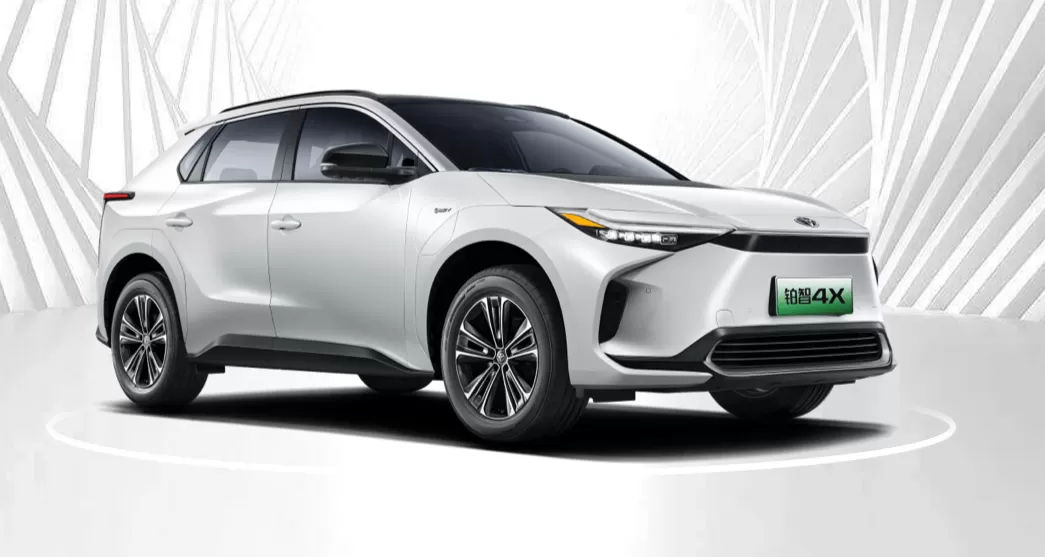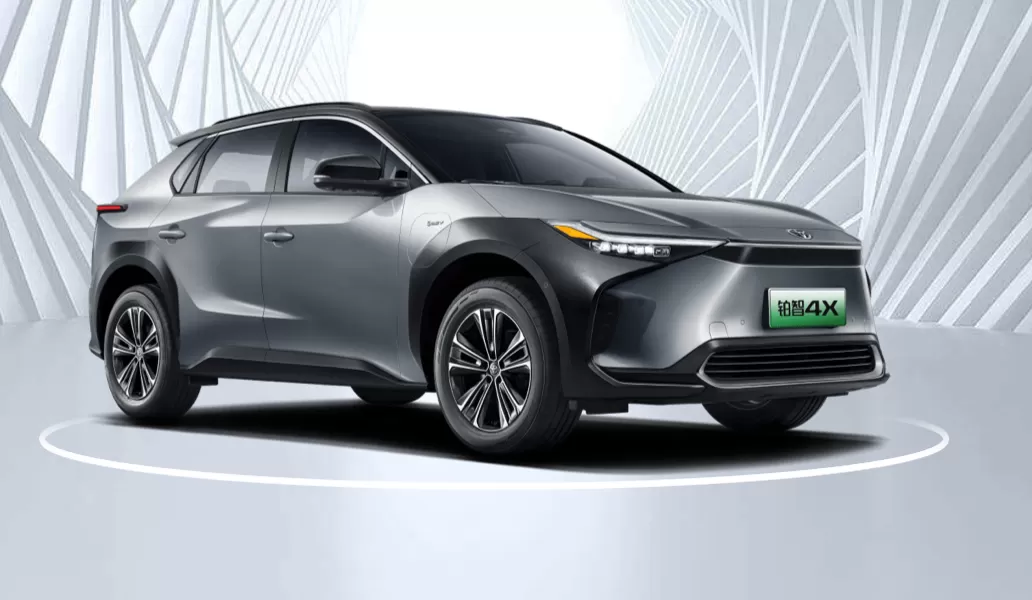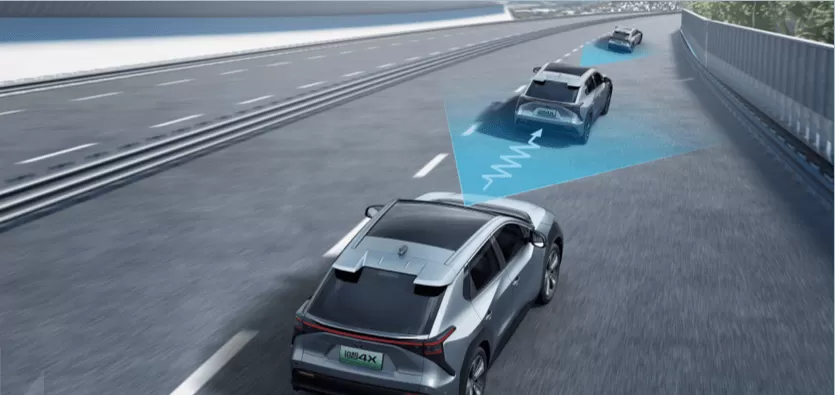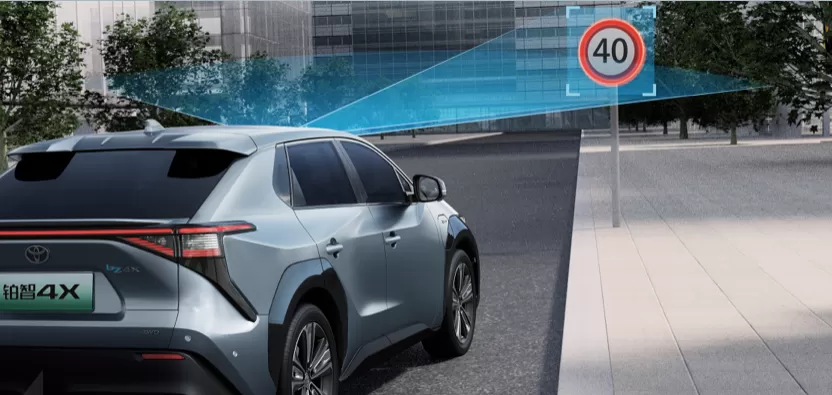1. Colour Options
grey

Black

White (Wheelbrows in the same colour)

white

silver

Red

grey & black

silver & black

white & black(Wheelbrows in the same colour)

white & black

2. Vehicle Highlights
2.1 Attention-grabbing appearance

Three-dimensional bevelled tail styling

Multi-eye LED headlamps (integrated high and low beam)*

Hammer Shark Front

2.2 Technological interior
2.2.1 Interior Design
Grey

Red

Black

2.2.2 Fabric Dashboard

2.2.3 Rotary electronic gearshift

2.2.4 Smart Wireless Charging System

2.2.5 Flexible and practical luggage compartment space

2.2.6 12.3-inch intelligent multimedia navigation system (with face recognition)

2.3Power handling
X-MODE 4WD Off-Road Assist Mode
A new off-road mode developed exclusively for BEVs by combining Subaru and Toyota technologies.
Grip-Control Intelligent Creep Mode
Maintains grip in adverse road conditions and assists with flat/uphill pedalling in addition to hill descent control.


e-Axle Super Drive
The electric drive axle with integrated motor, drive axle and inverter has the advantages of low loss, low noise, miniaturisation and light weight, high output power and excellent stability in straight line.

High retention rate BEV battery
Slows down battery ageing in terms of materials, battery pack construction, control systems, etc.

2.4Safety Configuration
2.4.1 PCS

PCS Pre-Collision Safety System
(with Forward Pedestrian Recognition)*2
Detects vehicles, pedestrians (day/night), bicycle riders (day/night) or motorbikes (day/night) in front of you via millimetre-wave radar and monocular camera, and informs of the possibility of a collision via the siren and multi-function information display. Pre-collision braking assistance is activated when the brake pedal is depressed, and if the brake pedal is not depressed, pre-collision braking is automatically activated, effectively preventing collisions or mitigating damage.
When the system determines that the likelihood of a collision with a pedestrian, bicyclist, motorbike, or vehicle is high and there is sufficient space within the lane to avoid, and the driver operates the steering wheel to avoid the collision, the system will provide steering assistance to ensure the stability of the vehicle and to assist in suppressing lane departure. When the system determines that there is not enough space in the lane to avoid, or there is an object in front of the avoiding vehicle, this function will not work.
When turning left at an intersection and a vehicle is travelling straight ahead in the opposite direction, or when turning left or right at an intersection and a pedestrian is crossing at a pedestrian crossing, it is recognised by millimetre-wave radar and a single-day camera, and informed of the likelihood of a collision by a siren and a multifunctional information display, activating pre-collision braking to assist the driver in effectively avoiding a collision or mitigating injuries.
When the detection object for pedestrians, bicycle riders, the system will run in the self vehicle speed of about 5 ~ 80kmh interval; when the detection object for vehicles, motorbikes, the system will run in the self vehicle speed of about 5kmmh or more, in order to avoid collision or reduce the driver injury
2.4.2 DRCC

DRCC Dynamic Radar Cruise Control
(with full-speed domain following function)*3
Recognises the vehicle in front of you through millimetre wave radar and monocular camera, and maintains a following distance corresponding to the vehicle speed to assist in following the vehicle. When the vehicle in front of you stops, your own vehicle stops and remains stopped; when the vehicle in front of you starts, the driver controls the start and follows the vehicle again. This reduces the driver's driving burden on motorways and other driving occasions. In addition, the cornering speed control function, when the dynamic radar cruise control system is activated for driving, if the system determines that it is necessary, speed control is carried out at the start of the steering, and the display shows that the system is running at the same time.
2.4.3 LTA

LTA Intelligent Lane Tracking System*4
Provides partial steering support to keep the vehicle in the centre of the lane. Provides necessary steering support to follow the vehicle ahead of it when the white line (yellow line) of the road is difficult or impossible to recognise, such as in traffic jams. When the vehicle is about to cross the line, a beeping alarm is sounded and an indication is given on the display, assisting with partial steering.Toyota Safety Sense upgrades the Intelligent Lane Assist system by upgrading the deep neural network system to recognise kerbstones, walls, guardrails, etc. The Toyota Safety Sense system is a new version of the Intelligent Lane Assist system, and is designed to recognise kerbstones, walls and guardrails.
2.4.4 LDA

LDA Lane Departure Warning System*5
When the system is in operation, the indicator light in the Multi-function Information Display (MID) will illuminate and the system status will be displayed on the MID. Lane Departure Warning Function: When the system determines that the vehicle is likely to deviate from the current lane or roadway it illuminates the indicator light in the Multi-function Information Display, vibrates the steering wheel or sounds the buzzer to notify the driver of the potential lane departure, and prompts the driver to correct the vehicle's path. Lane Departure Prevention: When the system determines that the vehicle is likely to depart from the current lane or road, in addition to activating the Lane Departure Warning function, it will also apply steering force to assist the driver in avoiding a lane departure.
2.4.5 PDA

PDA Predictive Active Driver Assistance’ 6
When the system detects a detectable object, Active Driver Assistance operates the brakes and steering wheel to prevent the vehicle from getting too close to the object.
2.4.6 EDSS

EDSS Emergency Driving Stop System*7
This system operates during LTA Intelligent Lane Tracking System activation, initiating a warning when the driver's condition is detected to be poor, stopping in the lane if the driver does not resume driving and providing an emergency indication to the neighbouring lane.
2.4.7 AHB

AHB High Beam Automatic Control System
Automatically switches between high and low beams to help drivers spot other vehicles as soon as possible when driving at night.
Reduces the burden of manual operation and prevents drivers from forgetting to operate.
2.4.8 RSA

RSA Road Sign Recognition Assist*8
Aids in the recognition of registered road signs ahead and displays them on the dashboard, and can even activate notifications to prevent drivers from breaking the law, such as speeding. The driver can activate/deactivate the RSA settings and decide whether to use it in conjunction with the display.
If the vehicle is speeding, or ignores a ‘No Entry’ traffic sign, the RSA will enable notification by highlighting or flashing the ‘Traffic Sign Displayed’ on the dashboard and emitting a clattering sound, which allows the driver to enable/disable the RSA's settings, as well as to decide The driver can enable/disable the RSA setting and decide whether to use it in combination with the clatter.
This function assists the driver in preventing exceeding the road speed limit during acceleration. The system adjusts the speed limiter when the speed set by the driver is reached. When a speed limit sign is detected by the system, the speed limit on the sign can be used to update the speed set by the speed limiter.

















































